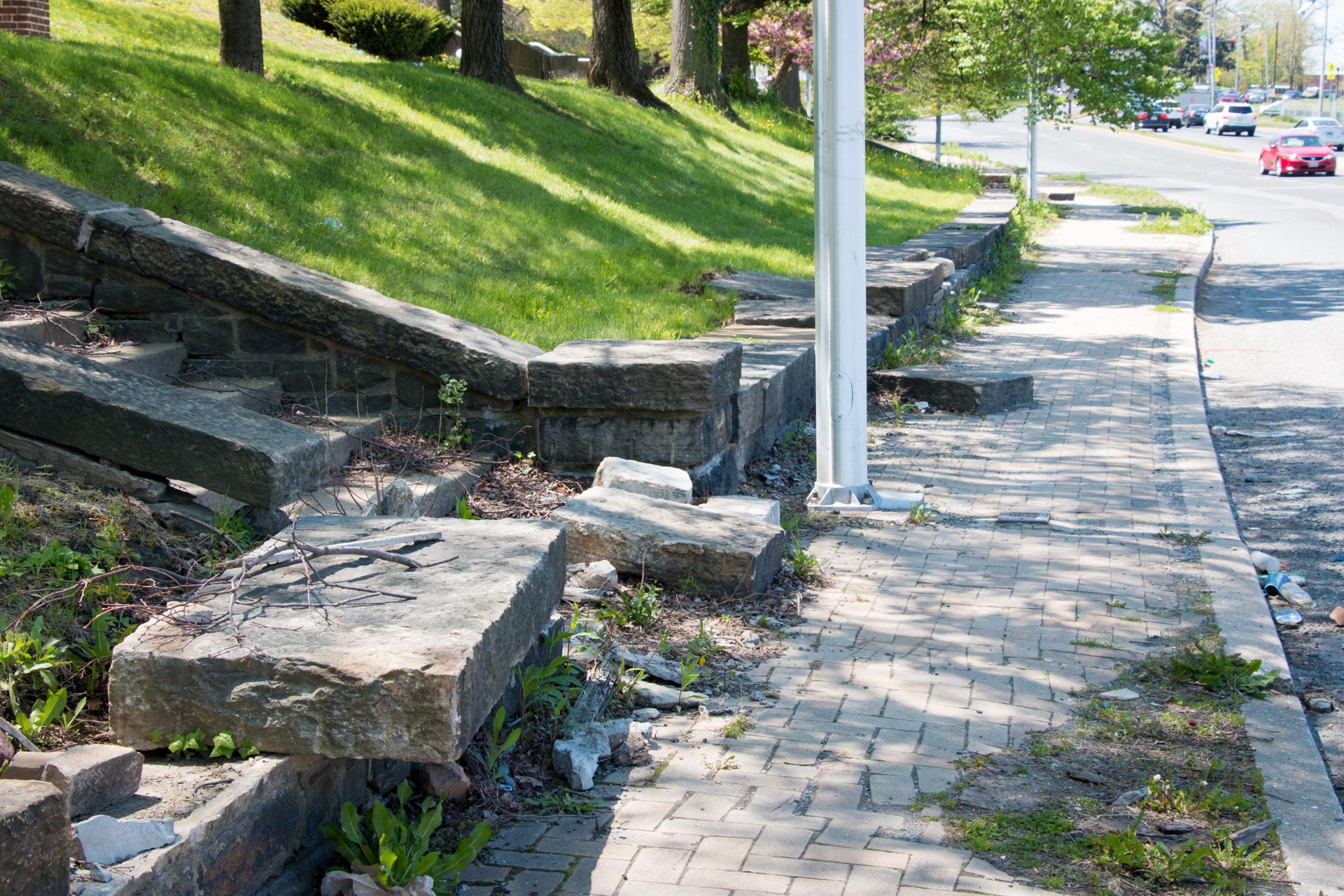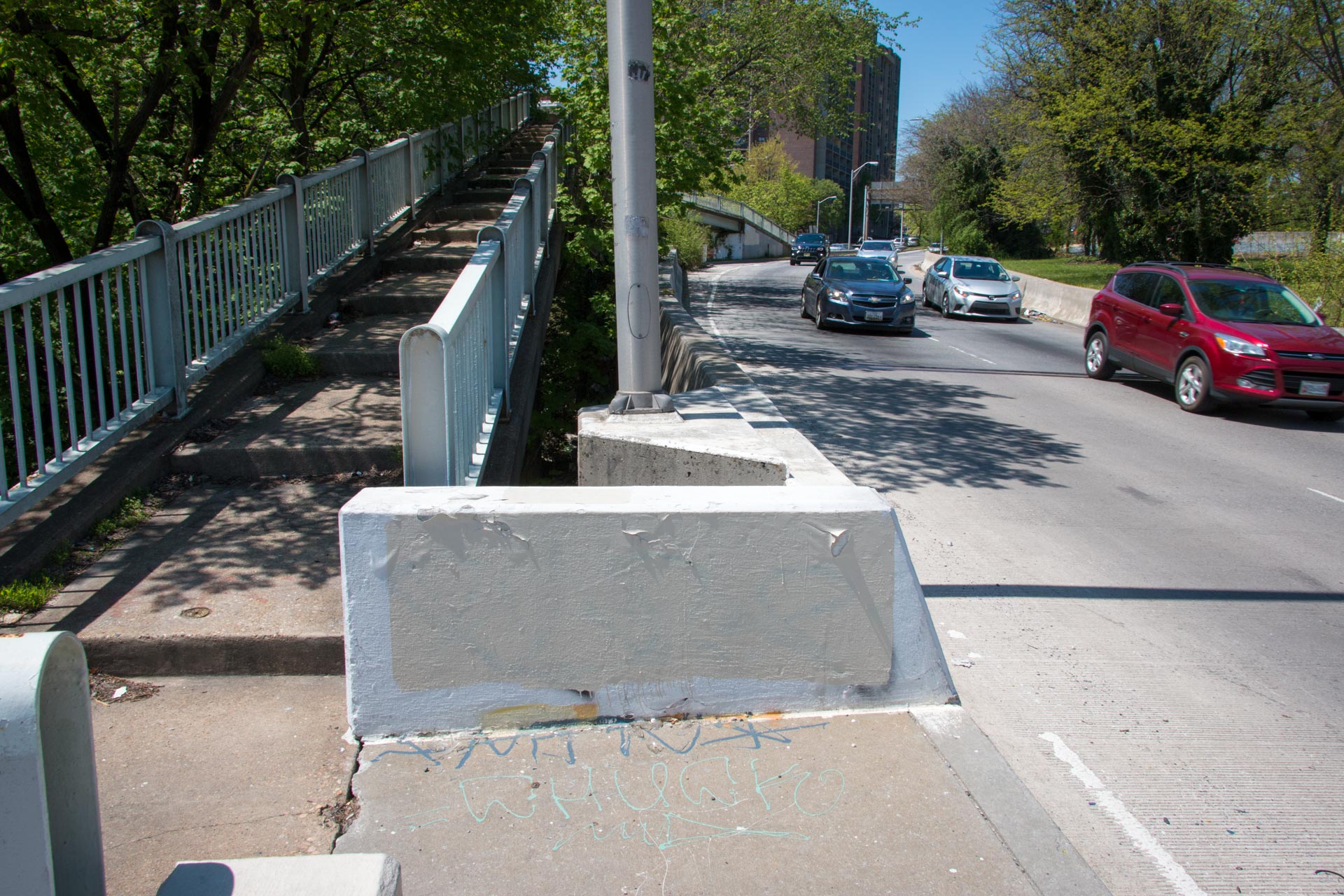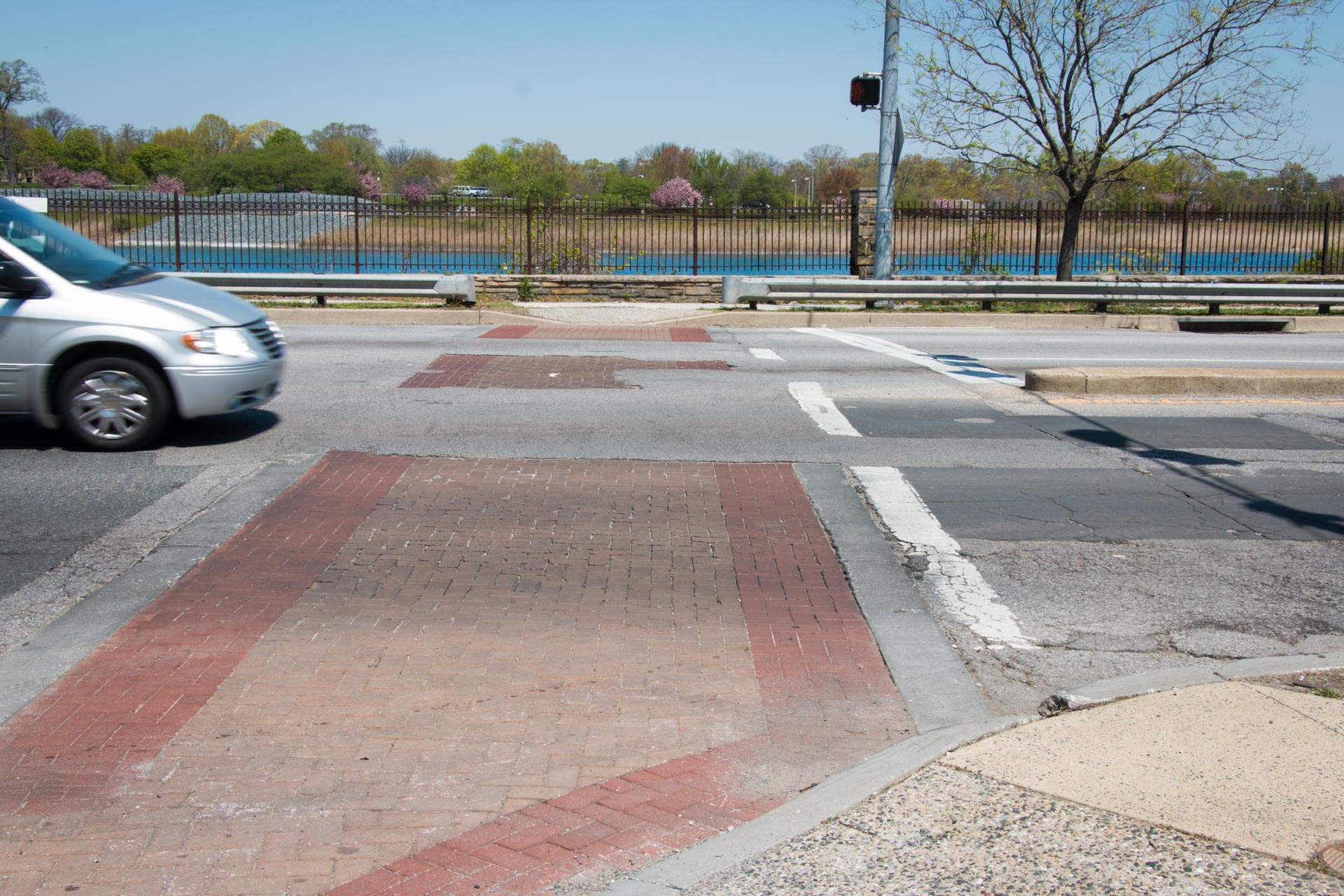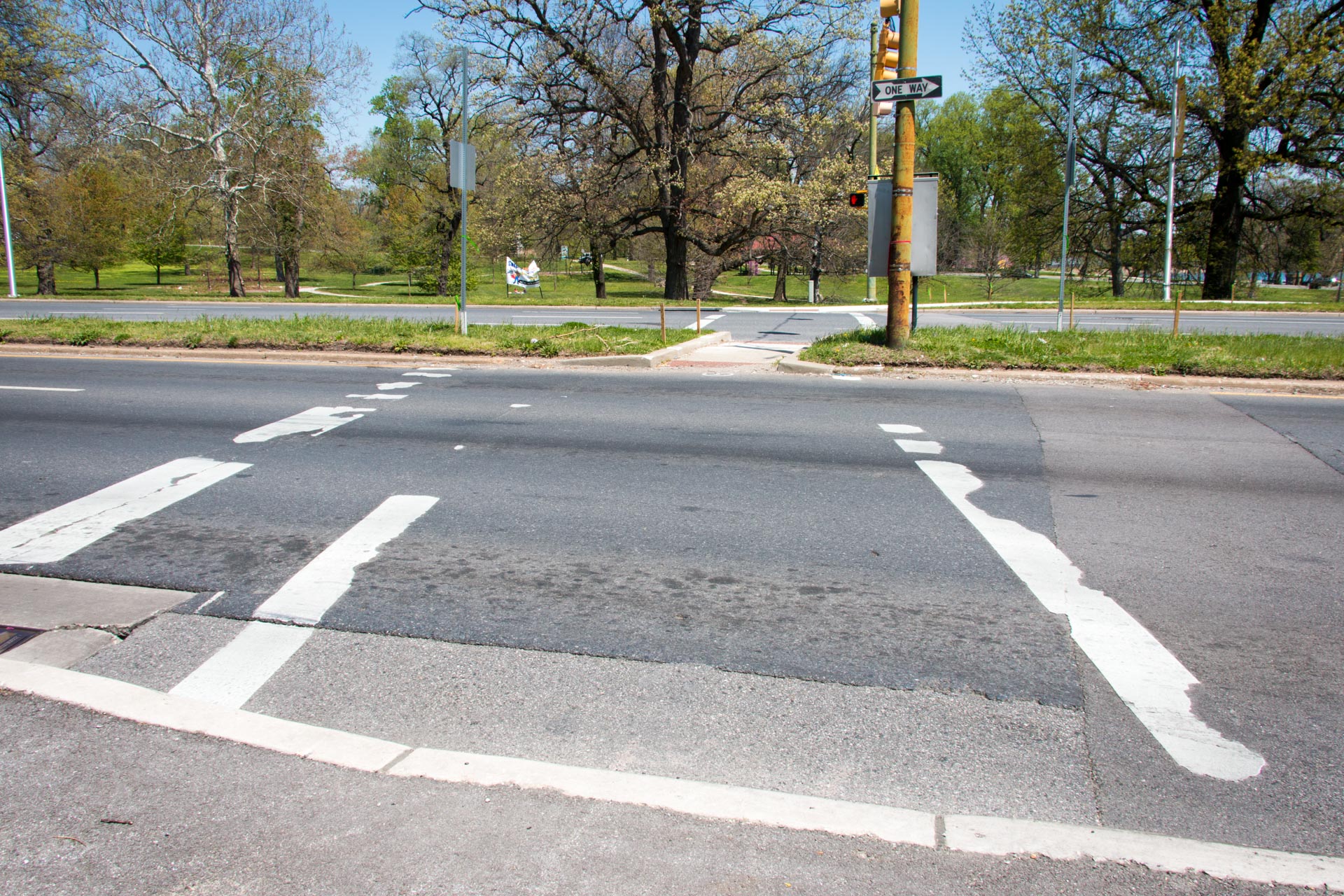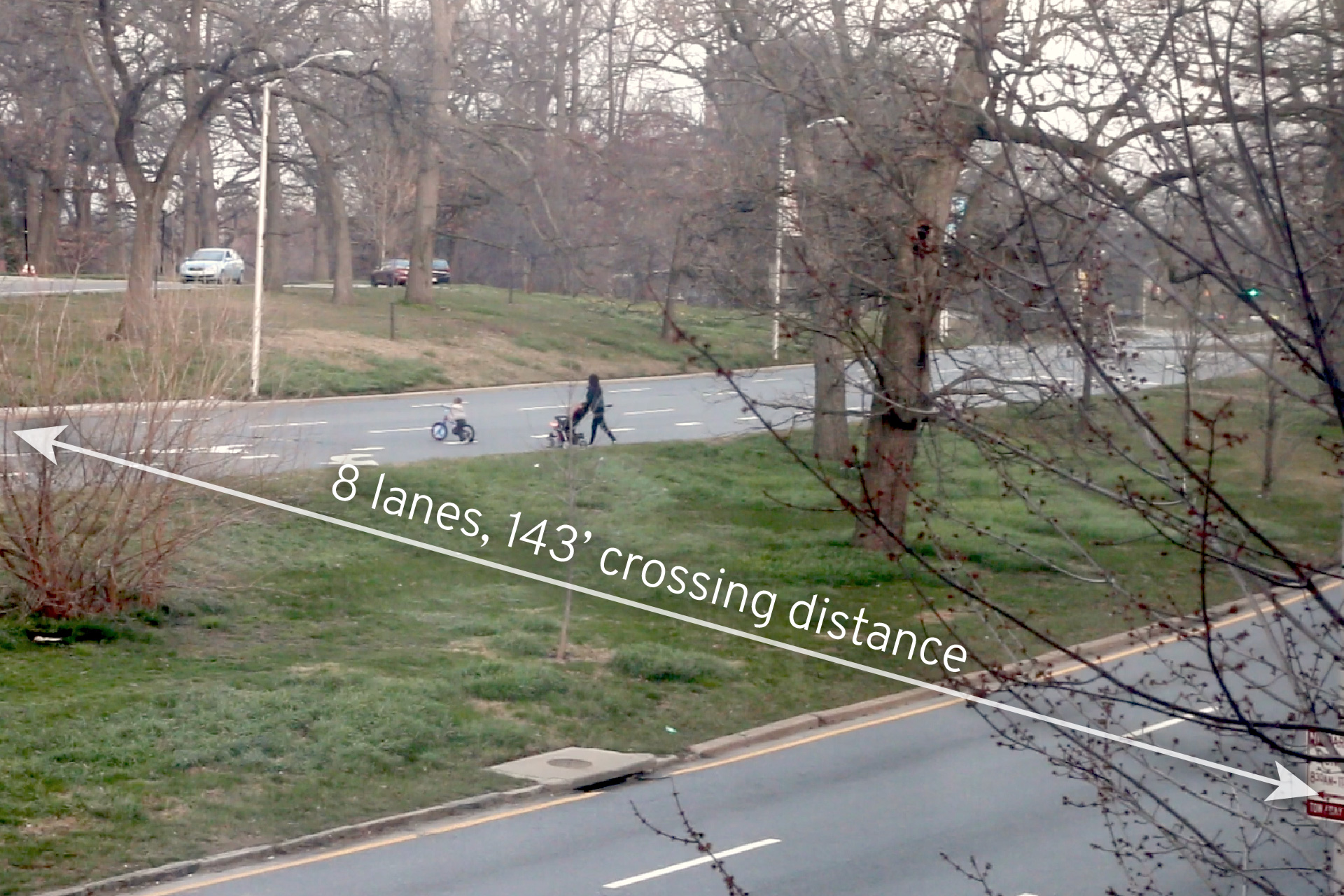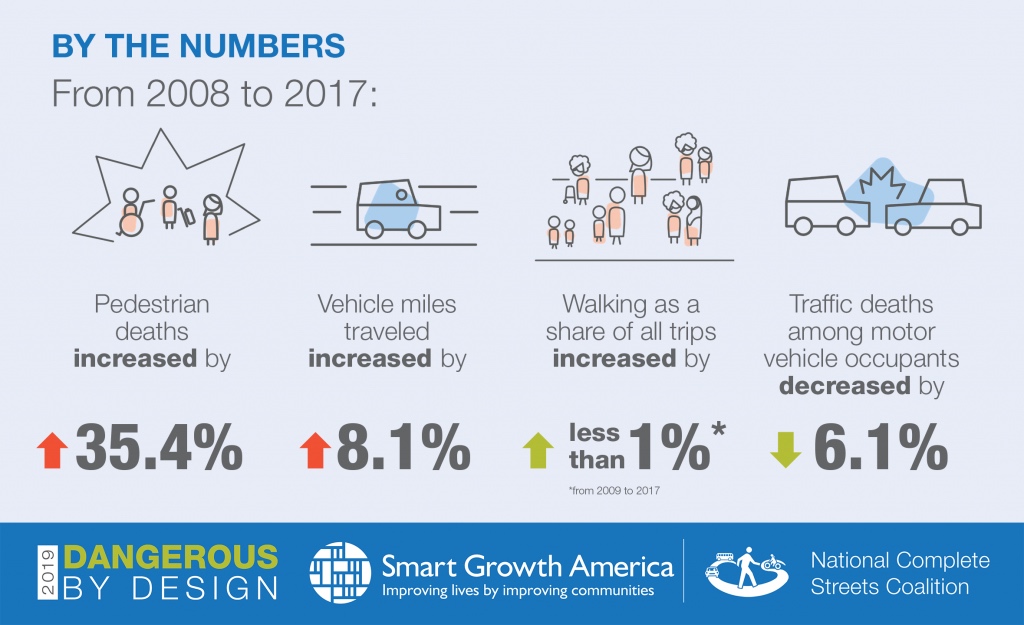Present Conditions Around Druid Hill Park
Around Druid Hill Park over 50% of residents do not use a personal car for transportation yet 90% of the public right-of-way is dedicated to cars. Residents who don’t drive rely on public transit, biking, walking, and ride sharing to move around the city. Druid Park Lake Drive and Auchentoroly Terrace are not safe to use for most residents and make it difficult for pedestrians, seniors, and children to get to Druid Hill Park.
The prioritization of traffic flow over neighborhood value and pedestrian safety has health and environmental impacts. Baltimore’s asthma hospitalization rates are far higher than the state and national average. The Baltimore City Health Department’s 2017 Neighborhood Health Profiles shows that the majority working income, African American communities around Druid Hill Park have some of the city’s highest mortality rates of cardiovascular disease and cancer.
Below are some of the dangerous conditions that pedestrians, people with disabilities, and residents who rely on transit, biking, and escooters face everyday.
Dangerous By Design
Roadways around Druid Hill Park induce motorists to speed. Cars driving at high speed above 20 miles-per-hour put pedestrians at risk of significant injury and death. Nationally the number of people struck and killed while walking increased by 35 percent over the past decade. The evidence is clear – we must protect residents’ lives by redesigning our dangerous roadways as complete streets.
Data
- Smart Growth America Dangerous By Design Report
- Pedestrian deaths remain U.S.’s highest since 1990, Curbed 3/1/2018
- GHSA Pedestrian Traffic Fatalities by State: 2017
- Baltimore City Neighborhood Health Indicators 21217
- Druid Hill Park Zip Code 21217 Demographics
- Druid Hill Park Zip Code 21217 Census data on means of transportation to work
- Asphalt arteries cut off communities from Druid Hill Park, Davin Hong, Baltimore Sun, June 8, 2017



